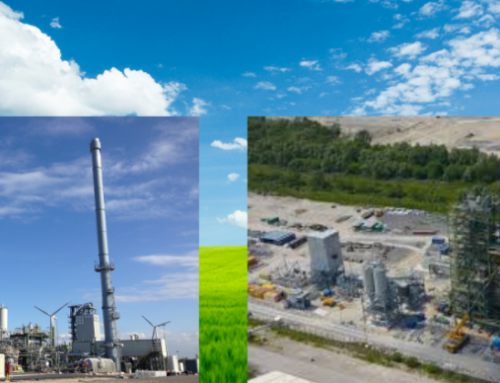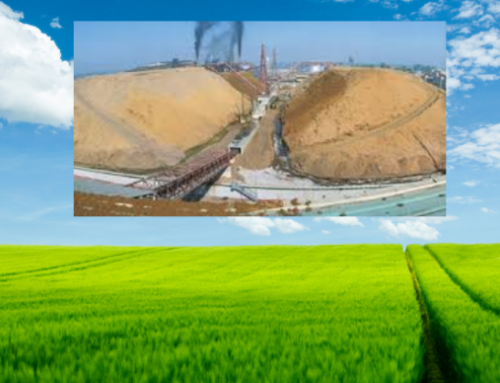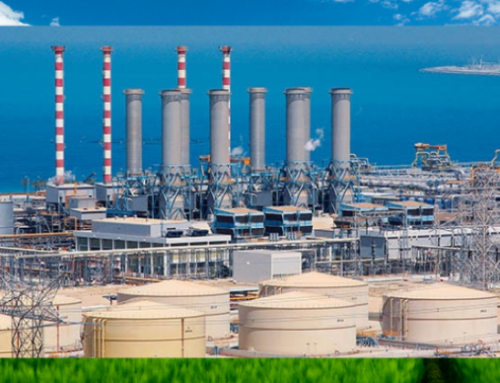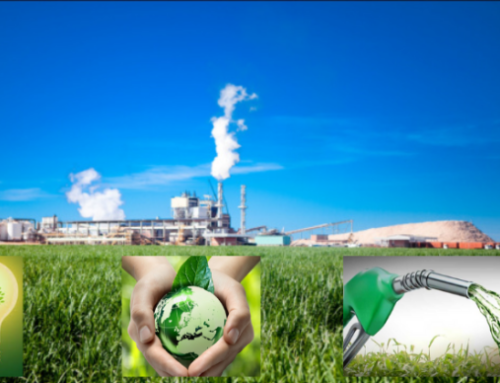Ivo Fouto (ivofouto@cenerbio.com) – June 16, 2020
Executive Summary:
This document aims to contribute with ideas and alternatives for a global economic recovery based on sustainable, renewable, and green infrastructure and industries.
The economic and strategic consequences of the pandemic are leading several countries, economic groups and investors to reconsider the current global supply chains, and their existing integration and concentration of industrial production processes, mainly in Asia.
This industrial concentration exposed, in several strategic areas, the weaknesses and the dependency of countries and economic blocs, as well as a high and undesirable concentration of economic power.
An eventual decentralization, changing location of existing industrial assets and operations, should be made, integrating the main sources of competitive raw material with new local industrial processing, in a competitive scale, based on green, renewable, and sustainable (economic, social and environmental) operations.
To make this happen is necessary to attract quality investments under ESG (Environmental, Social, and Governance) and PRI (UN Principles for Responsible Investment), as well as to fulfill the commitments assumed by the countries in the NDC in the Paris Agreement (UNFCCC)
To make this possible, a comprehensive infrastructure that is based on sustainable and renewable fuels and energy, as well as on new industrial technologies and new products, should be implemented and integrated with existing industrial technologies.
As this is an extensive matter that comprehends complex concepts.
The present document aims to help with the general understanding of the main technical and economic fundamentals associated to bioenergy, biofuels, and bio-materials (Biorefineries), indicating competitive alternatives that could contribute with a new global economic recovery, based on sustainable and green infrastructure and industries.
Considering the several technical characteristics indicated in the document, the tropical regions naturally have competitive climatic advantages in agricultural raw material production for contributing to this new sustainable economic recovery.
Brazil is already a good example of the proper combination of these natural competitive advantages with applied advanced technologies, which have, in the last 2 decades, transformed the country in a global and competitive producer of food, biofuels, and bioenergy, among other renewable and sustainable materials.
Brazil can serve as an example to be followed or even surpassed by the other tropical countries, with their own competitive climatic advantages, especially in the African continent with an immense and still available land.
The correct application of new technologies of industrial production, of Bioenergy, Biofuel, and Biorefinery in a strategic investment and development plan, will promote in several countries, autonomy, self-sufficiency, building new export platforms, generating sustainable wealth, creating permanent and long-term jobs.
Given the size of this document, it will be released once a week, as the following topics:
1. Competitive Biomass: Comparison and Analysis;
2. Distributed Electric Power Generation + Ethanol Production;
3. Production of Pyrolysis Oil + Ethanol – Co-processing in Petroleum Refineries;
4. Pulp & Paper Production Alternatives;
5. Biomass Gasification (BTL/CTL) – Conclusion
1. Introduction – Competitive Biomass comparison and analysis (UPSTREAM);
A group of U.S. economists, professors, investors, and business people, recently sent a letter to the U.S. Congress, asking for “green stimulus” legislation in order to jump-start the economy in a way that controls for climate change and poverty.
Another example of stimulus and change is Japan´s allocation of an economic stimulus package of US$ 2.2 billion to help its manufacturing firms shift their production out of China, where supply chains have been disrupted due to the coronavirus outbreak, with an additional US$ 220 million for companies seeking to move manufacturing base to other countries.
The European Green Deal ambition is clear and decisive: to decarbonize Europe. New targets see at least 50% of emissions cut by 2030 and carbon neutrality achieved by 2050. The European Green Deal, and more actively some of its members, like Germany, important Banks, and specialized media, will redefine the landscape in which all policies are developed, at least those focusing on health, energy, transport, environment, and agriculture. This is set to be a Just Transition, one that transforms and benefits all aspects of the European society, after the COVID-19 pandemic.
Also, the CEO of the European Round Table of Industrialists (ERT) and head of Swedish truck-maker Volvo has said that the continent’s largest companies will invest more money in jobs and home innovations, as the economic attractiveness of investing in China diminishes and the US becomes more protectionist.
Brazil and other tropical countries could be the best alternatives to receive such investments, based on Green and Sustainable initiatives.
Brazil is the largest tropical country, being rich in minerals, water, land, agriculture, manpower, and already a large scale producer and exporter of agricultural products, Animal Protein and Mineral Commodities.
This renewable and sustainable vision requires a strategy of Bioenergy, Biofuels, and Biorefinery initiatives, that are based in competitive biomass as renewable and sustainable raw material, to support and integrate into the all-new Green and Sustainable manufacturing and industrial downstream investments.
The following information is a contribution to the preparatory work to make the strategy and projects “shovel ready”.
1.1 Photosynthesis: Biological Conversion of Solar Energy into Biomass and Carbon – Tropical region advantage
Terrestrial and oceanic biological processes strongly affect the global carbon cycle on all time scales. In both components of the biosphere, oxygenic photosynthesis is responsible for virtually all of the organic matter biochemical production.
Solar energy reaching the biosphere (~3×10^24 J/year) is captured and converted into biomass and carbon content by terrestrial and aquatic ecosystems, with an efficiency of 0.1% (~3×10^21 J/year), being stored in ~200 Gt (dry weight) of biomass per year at the expense of solar energy, since ~30 GJ corresponds to the synthesis of ~2 tons of biomass.
On the other hand, the solar energy that is overall incorporated into the plant kingdom is 10 times greater than the energy consumed by humanity (~3×10^20 J/year) and about 200 times greater than the energy consumed as food (~1, 5×10^19 J/year).
Although the aquatic ecosystem covers approximately 2/3 of the Earth’s surface, due to its low efficiency (~1×10^14 J/year), it produces approximately the same amount of biomass as the terrestrial ecosystem.
Taking into account that the Earth, with a diameter of around 1×10^4 km, presents an area of about 5×10^10 ha; one can calculate that the average dry biomass production is between 4 and 6 t/ha/year, corresponding to at least 6 t/ha/year for the terrestrial ecosystem, and 3 t/ha/year for the aquatic one.
Studies estimating Net Primary Production (NPP), based on ocean and terrestrial ecosystem satellite measurements, show that tropical regions have the highest NPP indexes.
It is worth mentioning that plant biomass productivity has the following returns: Forests 10 and 40 t/ha/year; Corn 20 and 50 t/ha/year; Conventional sugar cane between 35 and 60 t/ha/year, new varieties of Energy Cane with commercial productivity between 80 – 160 t/ha/year.
Algae have a wide range between 50 and 200 t/ha/year, but commercial productivity has been shown as being low, associated with high production costs.
The most competitive and sustainable raw material will be the one that has the best and most efficient photosynthetic process, the lowest production cost, and that is located in favorable edaphoclimatic (soil and climatic suitability for agricultural production) regions which provide abundant solar irradiation, optimizing biomass production and atmospheric carbon conversion/absorption.
1.2 Bioenergy, Biofuels, and Biorefinery – Sustainable Brazilian and Tropical Region Platform for Development and Competitiveness
Brazil´s recent fast and robust development can be pursued by all other tropical countries for a sustainable development, competitive food production, large scale biomass production and structuring Bioenergy, Biofuels and Biorefinery supply chains.
Brazil is the largest tropical country in the world and therefore has a substantial competitive advantage over other countries in terms of agricultural food and biomass productivity.
This advantage is directly associated with the country’s tropical edaphoclimatic characteristics, but also due to the agricultural technologies, developed and applied from the implementation of an advanced legal and regulatory framework (Law 9279/1996; Law 11,105/2005) that was integrated globally (Law 9,456/1997), starting in 1996.
After implementing this regulatory process and the respective legal framework for intellectual property protection, Brazil started to attract major global agricultural biotechnology companies, and adapting existing technologies from subtropical regions around the world, taking advantage of the more competitive tropical edaphoclimatic conditions found in the country.
Embrapa and other local agricultural technology companies have been benefited from this massive increase in investments in technological development in Brazil.
The evidence of this benefit to Brazil´s agricultural improvement can be easily demonstrated by looking at the productivity of its main agricultural commodities (e.g. soy, corn, and cotton), since the end of the ’90s.
Another clear proof of the benefits of implementing these technologies is the geographic change in agricultural production, since it was concentrated in Brazil´s subtropical regions, before 1996. It has then moved to the central tropical regions of Brazil, including the large savanna biome (Cerrado), as a direct benefit of these technologies.
These already adapted and widely demonstrated tropical agricultural technologies have uniquely positioned Brazil as the largest food producer in the world, as well as a leader and major influencer of these agricultural technologies in other tropical countries around the world.
Brazil also holds another competitive advantage with regards to the preservation, conservation, and sustainability of agricultural production areas.
Despite the wide misinformation, Brazil holds another massive competitive advantage with regards to these segments, considering the current scenario and potential areas for sustainable development.
The constant technological evolution in the livestock sector, existing large areas of degraded pasture will no longer be necessary and will provide room for sustainable agricultural expansion over those degraded areas.
Brazil was surprised by the fast and huge shift in the location of agricultural production to new agricultural productive regions. Even today the country is still deficient in integrated logistic infrastructure to store and transport, in a competitive and sustainable manner, all its new technologically sophisticated agricultural production.
This is one of the areas that has been neglected by the Federal Governments in the last 2 decades and now requires a great deal of attention, strategy, and governmental effort, to promote large, and long-term investments by the public and private sectors.
1.3 Bioenergy – Biofuels – Biorefinery
The presence of advanced agricultural technologies and biotechnology in Brazil, associated with the great competitive advantage of its tropical edaphoclimatic condition, gives to the country an incomparable potential for producing biomass in a sustainable and competitive manner.
Biomass is the essential renewable raw material for sustainable production of Bioenergy, Biofuels, and Biomaterials in existing established industrial processes, as well as in new Biorefinery production models of renewable and non-fossil sources.
The structured integration of raw material production chains (upstream) with advanced technologies of industrial processing (downstream) could set Brazil in an unsurpassed global position of leadership in the production and export of Bioenergy, Biofuel, and Biomaterials.
Unlike minerals and other agricultural commodities, biomass must be processed locally due to its characteristics, mainly its intrinsic low density.
In subtropical countries, with low biomass productivity, complex and extremely expensive structures for collection, storage, and transport of biomass are required. This makes the sustainable economic viability of Bioenergy, Biofuels, and Biorefinery projects very difficult (2016 Billion-Ton Report – Chapters 4 and 6), in these regions.
The North American Government’s strategic concern with biomass availability, cost, and homogeneity as a competitive and sustainable source of raw material, created a continuous program of evaluation and monitoring (Billion-Ton Report).
The amount of 1 billion tons of biomass was defined as the volume needed to produce biofuels annually, using selected biomass conversion technologies (Biochemical and Thermochemical), in order to replace 30% of the petroleum, based on 2005 volumes.
The low density of biomass requires and boosts local industrial processing, verticalizing the production chain, adding value locally to these renewable, sustainable and competitive raw materials, with regional development, generating sustainable and permanent jobs, in addition to promoting a continuity flow of investment and Research, Development and Innovation (R&D&I).
The technologies of industrial processing of Biomass for the production of Bioenergy, Biofuels, and Bioproducts, under development in Europe, North America and Asia have not yet become economically viable due to the high cost, lack of homogeneity and scarcity of biomass.
However, these advanced technologies can be immediately applied in Brazil and other tropical countries in an integrated and economically viable manner, creating a sustainable and innovative export platform, generating permanent jobs and national development.
1.4 Energy Cane:
To meet the needs of large-scale biomass production, in a competitive and sustainable manner, a new group of agricultural varieties called ENERGY CANE has been developed in Brazil.
These new genetic varieties, non-transgenic, with high synthesis capacity, were specifically developed to meet the main demands of Bioenergy and Biofuels projects, as well as the new Biorefineries and their complex products.
Energy Cane, an exceptional Energy Crop for its advanced characteristics, can also be applied in existing industrial sectors, such as the production of Pulp & Paper and Sugar & Energy (Sugar + Power + Ethanol).
Energy Cane was developed from the conventional Sugarcane germplasm, and its genetic ancestors, through non-transgenic breeding programs, using the most advanced biotechnology tools, associated with a wide and diversified germplasm bank.
The genetic improvement objectives of the Energy Cane breeding programs were:
High productivity of Lignocellulosic (Cellulose, Hemi-Cellulose, and Lignin) Biomass ;
High rusticity;
Tolerance to poorer and less demanding soils;
High deployment and operational flexibility;
Maintenance of existing and widely proven agricultural production practices and Industrial handling; and pre-treatment processing of conventional Sugarcane.
The C4 type photosynthesis and Polyploidism genetics are characteristics that guarantee, to this new Energy Crop, the competitiveness and genetic gain improvement for sustaining long-term cost reduction.
Energy Cane uses all the technology and experience of Sugarcane agricultural operations developed in Brazil since the 1970s (Proálcool).
Compared with conventional Sugarcane, Energy Cane has some additional capabilities in its root system and in the number of stalks, which guarantee its resistance and implantation flexibility.
These advanced characteristics allow a high planting speed, which can occur at the same time as the industrial implantation, even in greenfield projects.
The high productivity of Energy Cane, associated with its composition, makes it possible to be used in Biorefineries, which need both Lignocellulosic biomass as well as fermentable sugars.
These sugars can be used in new fermentation processes, for manufacturing specific new products, including the widely known and proven production of Ethanol.
In the conventional Sugarcane, the main productive target is Sucrose (crystallization for food sugar and fermentation for Ethanol). In the Energy Cane, the main production objective is the total biomass, both Lignocellulosic and fermentable sugars.
In the Energy Cane, the concentration of Sucrose in the total fermentable sugars is lower than in conventional Sugarcane. As an operational result, the period of the Sucrose maturation curve is no longer relevant for agricultural production and the main new goal is to maximize vegetative growth (total Biomass production).
With these characteristics, Energy Cane can be produced and harvested throughout the year, instead of being limited to the 200-days/year of Sugarcane harvest (in Brazil), that aimed exclusively at maximizing Sucrose production.
1.5 Energy Cane – Highlights:
The genetic trade-off of this new energy crop, within a breeding and selection strategy, using molecular markers and other advanced biotechnology and specific germplasm tools, was the increase in the Lignocellulosic biomass and the consequent reduction in total fermentable sugars, with lower Sucrose concentration.
Compared with conventional Sugarcane, the benefits achieved with the genetic improvement of Energy Cane, in addition to the increased biomass productivity, lower operational cost and year-round production, were also:
- A robust and highly efficient root system, which allows rapid implantation in more restrictive soils, using proportionally fewer inputs (fertilizers and water), with higher biomass production per planted area;
- Despite the lower proportional biomass generation of fermentable sugars, there is a greater production of these sugars per planted area due to the increase in total biomass production with a consequent higher Ethanol production, per planted area;
- With the higher total Lignocellulosic biomass production, there is an increase in its components such as Lignin and Cellulose. Another competitive advantage of Energy Cane is the increase in Cellulose fiber quality, due to its longer fibers when compared to Cellulose´s fibers from regular Sugarcane Bagasse, or even to the one from the Eucalyptus.
Biomass cannot be transported/exported competitively, due to its low-density load and energy. For its proper use, local processing is necessary, with an integration and verticalization of the production chain, a generation of added value and, the creation of permanent and long-term jobs, promoting local sustainable development.
For this reason, Energy Cane, with its advanced, renewable, sustainable, large scale low biomass/raw material cost, adequately integrated with established and existing industrial processes, while adjusted for this biomass raw material, would be the bases of a large sustainable development of Brazil as well as a regional influence (tropical regions) based on advanced technologies, locally developed and integrated for a competitive and sustainable production of Bioenergy, Biofuels, Bio-Materials, Cellulose, Food, and others.
Currently, the most developed countries are located in regions with a subtropical climate and, therefore, are unable to widely benefit from the basic photosynthetic characteristics of plants in general, even from Energy Cane.
On the other hand, these countries are investing heavily in advanced industrial processes, attempting to make viable their scarce and expensive sources of biomass.
The integration of these existing advanced processing technologies, associated with the abundance and low cost of biomass production, grants an enormous competitive advantage to Brazil and other Tropical countries.
This is widely proven in the production of Cellulose, where biomass production (Eucalyptus – short fiber) associated and integrated with advanced industrial processing technology, places Brazil as the global production/export leader of this segment.
The Lignin present in the biomass of Energy Cane, together with the fermentable sugars for Ethanol production, assures energy self-sufficiency in addition to surplus energy exports and Biofuel production, in all industrial pathways and Biorefineries in which Energy Cane will be used.





















